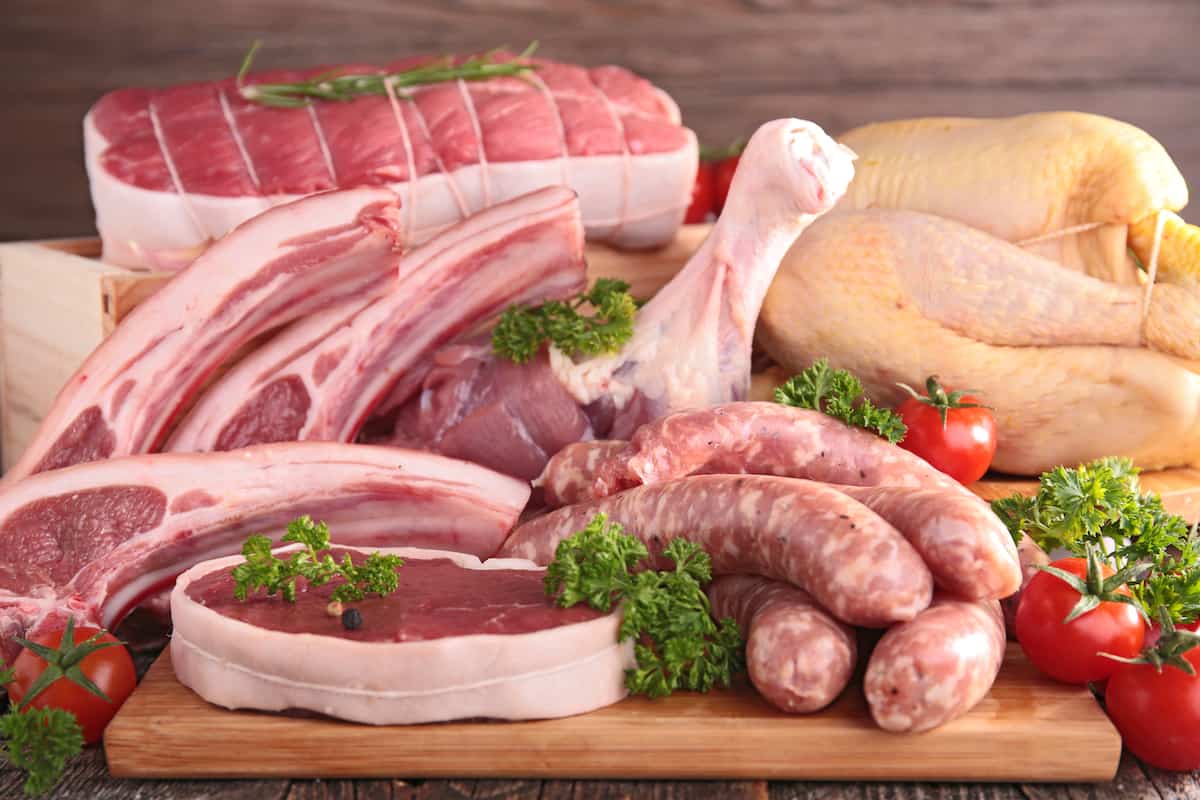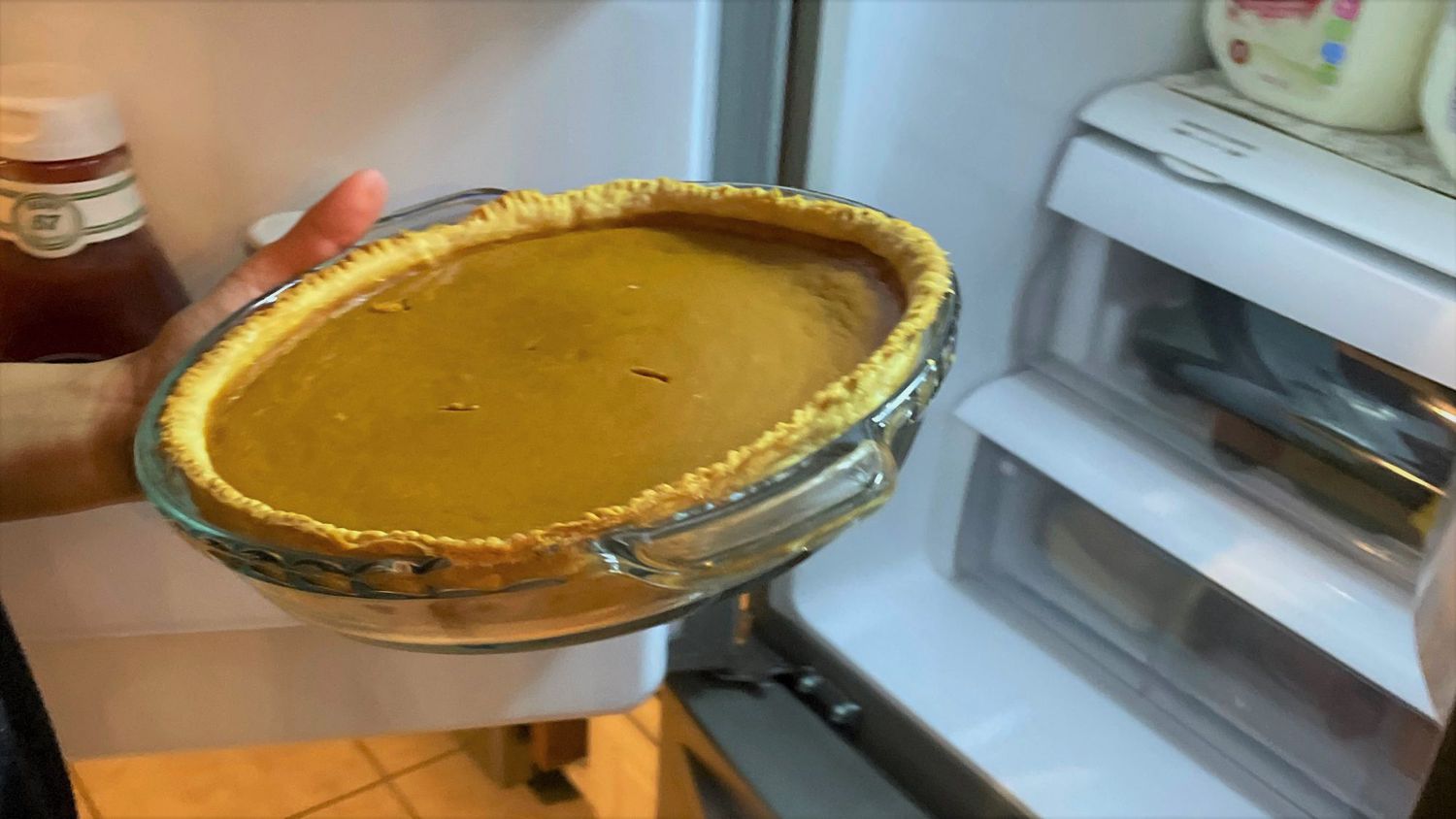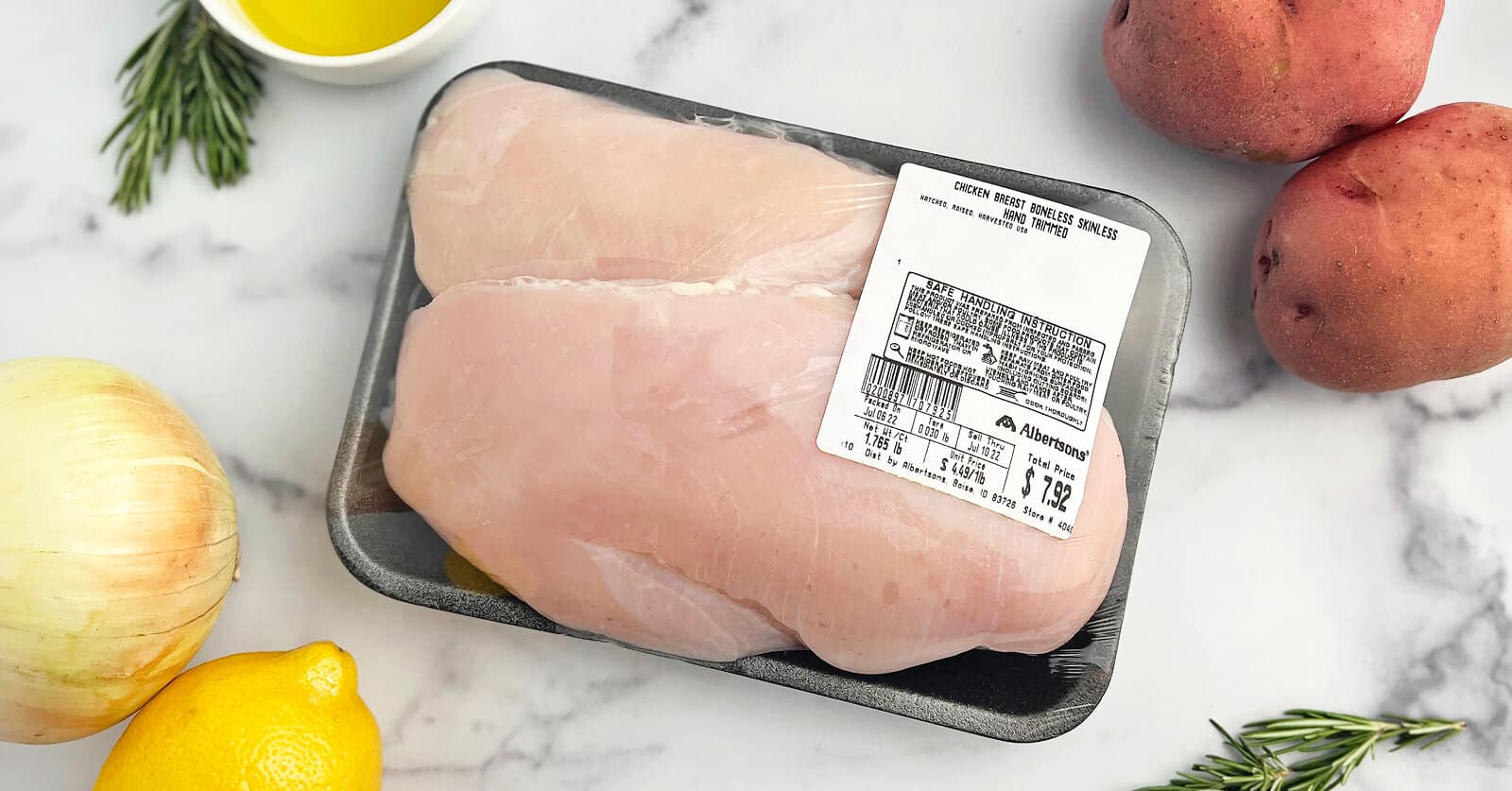

Articles
How Long Can You Keep Meat In The Freezer
Modified: February 28, 2024
Discover the proper guidelines for storing meat in your freezer. Read articles and tips on how long you can safely keep meat frozen to maintain its quality and freshness.
(Many of the links in this article redirect to a specific reviewed product. Your purchase of these products through affiliate links helps to generate commission for Storables.com, at no extra cost. Learn more)
How Long Can You Keep Meat In The Freezer
Proper storage of meat in the freezer is crucial to maintain its quality and prevent any potential health risks. Freezing meat helps to preserve it for an extended period of time, but it’s important to understand how long different types of meat can be safely stored in the freezer.
Several factors can affect the shelf life of frozen meat. These include the type of meat, its packaging, the temperature of the freezer, and the overall quality of the meat before freezing. It’s important to consider these factors when determining how long you can keep meat in the freezer.
Understanding Freezer Storage Time
Guidelines have been established to determine the recommended freezer storage time for different types of meat. These guidelines take into account the optimal conditions for maintaining the quality and safety of the meat. It’s important to follow these recommendations to ensure that the meat remains in the best possible condition.
The storage time for meat in the freezer will vary depending on the type of meat and its specific characteristics. Here is a general overview of the recommended freezer storage times for various meats:
Beef and Pork
Beef and pork can be safely stored in the freezer for up to 12 months. However, for the best quality, it is recommended to consume them within 6-9 months.
Poultry
Chicken, turkey, and other poultry can be stored in the freezer for up to 9-12 months. Again, it is advisable to consume them within 6-9 months for optimal taste and texture.
Lamb and Veal
Lamb and veal have a slightly shorter freezer storage time compared to beef and pork. They can be frozen for up to 9 months, but it’s best to consume them within 4-6 months for the best flavor.
Game Meat
Game meats such as venison and rabbit can be safely stored in the freezer for 8-12 months. However, it’s recommended to consume them within 6-9 months to retain their tenderness and taste.
Seafood
Fish, shrimp, and other types of seafood can be stored in the freezer for up to 3-6 months. It’s important to consume them within this time frame to maintain their freshness and quality.
How Long Can You Keep Meat In The Freezer
Proper storage of meat in the freezer is essential to maintain its quality and ensure the safety of consumption. Freezing meat at the right temperature and using appropriate packaging methods can extend its shelf life and preserve its taste and texture. Understanding the factors that affect the shelf life of frozen meat can help you make informed decisions about storing and using your frozen meats.
Importance of proper storage of meat in the freezer
Freezing meat is an effective method to prevent bacterial growth and spoilage, allowing you to enjoy fresh-tasting meat for a longer time. Proper storage ensures that the meat retains its nutritional value, flavor, and texture when thawed and cooked. By following the recommended storage guidelines, you can minimize the risk of foodborne illnesses and make the most out of your freezer space.
Factors affecting the shelf life of frozen meat
Several key factors influence how long meat can be safely stored in the freezer:
Temperature
The temperature of the freezer is crucial for maintaining the quality of frozen meat. Ideally, the freezer should be set at 0°F (-18°C) or lower. Consistently keeping the freezer at the correct temperature prevents the growth of bacteria and reduces the risk of spoilage.
Packaging
The way meat is packaged before freezing can impact its quality. Proper packaging helps to prevent freezer burn and keeps the meat protected from air and moisture. Vacuum-sealed bags or airtight containers are recommended to maintain the flavor, texture, and overall quality of the meat.
Type of meat
Different types of meat have varying storage times due to their composition and fat content. Some meats, such as beef and pork, can typically be stored for longer periods compared to poultry and seafood. Understanding the specific recommended storage times for each type of meat is crucial to ensure optimal quality.
Quality of meat
The quality of the meat before freezing can affect its overall shelf life. Fresh, high-quality meat will retain its flavor and texture for a longer time in the freezer compared to meat that was close to its expiration date or of lesser quality.
By considering these factors and following the recommended storage guidelines, you can maximize the shelf life of your frozen meat and enjoy delicious meals whenever you need them.
How Long Can You Keep Meat In The Freezer
Proper storage of meat in the freezer is crucial to maintain its quality and ensure its safety for consumption. Understanding the recommended freezer storage times for different types of meat helps you make informed decisions about when to use or discard frozen meat. The recommended storage times are based on guidelines that consider the impact of storage time on meat quality and safety.
Guidelines for determining the recommended freezer storage time for different types of meat
The United States Department of Agriculture (USDA) provides guidelines for the recommended freezer storage times for various meats. These guidelines are based on extensive research and are designed to ensure that the frozen meat remains safe to eat while maintaining its quality.
The recommended freezer storage times vary based on the type of meat and its specific characteristics. For example, the storage time for beef and pork is generally longer compared to poultry and seafood. It’s important to consult reliable sources, such as the USDA, for specific storage times for different types of meat.
The guidelines take into consideration factors such as the composition of the meat, fat content, and potential for bacterial growth. These factors affect the overall safety and quality of the meat during storage. By following the recommended storage times, you can minimize the risk of consuming spoiled or unsafe meat.
Impact of storage time on meat quality and safety
Storage time plays a significant role in the overall quality and safety of frozen meat. As meat is stored in the freezer, it undergoes natural changes in texture, flavor, and appearance. Over time, the quality of the meat may deteriorate, affecting its taste and enjoyment when cooked.
Extended storage times can also increase the risk of freezer burn, which occurs when the meat is exposed to air in the freezer. Freezer burn can result in a dry, tough, and off-flavored meat. Additionally, prolonged storage can lead to the growth of bacteria and potential foodborne illnesses if the meat is not handled properly.
It’s important to note that while frozen meat can be safe to consume beyond the recommended storage times, the quality may be compromised. Flavor and texture may be diminished, affecting the overall eating experience. Therefore, it is advisable to follow the recommended storage times to enjoy meat at its best.
By understanding the guidelines for freezer storage time and the impact it has on meat quality and safety, you can make informed decisions about storing and consuming frozen meat. Remember to always prioritize safety and quality to enjoy the best-tasting meals.
How Long Can You Keep Meat In The Freezer
Proper storage of meat in the freezer is critical to maintain its quality and ensure it remains safe for consumption. Understanding the recommended freezer storage times for various types of meat can help you plan your meals and avoid waste. Here are the recommended freezer storage times for different meats:
Read more: How Long Can You Keep Walnuts In The Freezer
Beef and Pork
Beef and pork can be safely stored in the freezer for an extended period. The recommended freezer storage time for beef and pork is up to 12 months. However, for the best quality, it is recommended to consume these meats within 6-9 months of freezing. Beyond this time frame, the texture and flavor of the meat may begin to deteriorate.
Poultry (Chicken, Turkey, etc.)
Poultry, including chicken and turkey, can also be stored in the freezer for a significant period. The recommended freezer storage time for poultry is up to 9-12 months. To ensure the best quality and taste, it is advisable to consume frozen poultry within 6-9 months. This helps maintain the texture and flavor of the meat.
Lamb and Veal
Lamb and veal have a slightly shorter freezer storage time compared to beef and pork. It is recommended to store lamb and veal in the freezer for up to 9 months. However, to enjoy the best flavor and tenderness, it is advisable to consume these meats within 4-6 months of freezing.
Game Meat (Venison, Rabbit, etc.)
Game meats, such as venison and rabbit, can be safely stored in the freezer for a considerable period of time. The recommended freezer storage time for game meat is 8-12 months. To ensure optimal tenderness and taste, it is recommended to consume game meat within 6-9 months of freezing.
Read more: How Long Can You Keep Salmon In The Freezer
Seafood (Fish, Shrimp, etc.)
Seafood, including fish and shrimp, has a shorter freezer storage time compared to meats mentioned earlier. The recommended freezer storage time for seafood is 3-6 months. It is advisable to consume frozen seafood within this time frame to maintain its freshness and quality.
Remember, these recommended freezer storage times are guidelines to help maintain the best quality and safety of the meat. It is always important to ensure that the meat has been stored properly and is free from freezer burn or any signs of spoilage before consumption.
How Long Can You Keep Meat In The Freezer
Proper freezing and thawing techniques are essential to maintain the quality and safety of meat. Here are some helpful tips to ensure the best results when freezing and thawing your meat:
Proper packaging techniques to maintain quality and prevent freezer burn
The way you package your meat before freezing plays a crucial role in maintaining its quality. Here are some tips to keep in mind:
- Wrap the meat tightly: Use moisture-resistant and airtight packaging materials such as plastic wrap, freezer bags, or vacuum-sealed bags. Ensure there are no gaps or openings that could allow air or moisture to enter.
- Remove excess air: If using plastic bags, squeeze out as much air as possible before sealing. This helps prevent freezer burn and maintains the texture and flavor of the meat.
- Divide into portions: For convenience, divide larger cuts of meat into smaller portions before freezing. This allows you to thaw only the portions you need, reducing waste and maintaining the quality of the remaining meat.
- Label and date the packages: Clearly label each package with the type of meat, cut, and date of freezing. This helps you keep track of the storage time and easily identify the contents when thawing.
By following these packaging techniques, you can prevent freezer burn and maintain the quality of your frozen meat for an extended period.
Techniques for safely thawing frozen meat
Thawing meat properly is equally important to preserve its texture, taste, and safety. Here are some safe methods for thawing frozen meat:
- Refrigerator thawing: The safest method is to thaw meat in the refrigerator. Place the frozen meat on a plate or in a container to catch any drips. Allow enough time for the meat to thaw completely, as this method is slower but ensures even thawing without the risk of bacterial growth.
- Cold-water thawing: If you need to thaw meat quickly, you can use the cold-water thawing method. Seal the meat in a leak-proof plastic bag and submerge it in a bowl of cold water. Change the water every 30 minutes to maintain a safe temperature. Be cautious not to use warm or hot water, as it can promote bacterial growth and partially cook the meat.
- Microwave thawing: The microwave can be used for small cuts of meat, but it’s important to follow the manufacturer’s instructions for thawing. Use the defrost function and monitor the meat closely to prevent partially cooking it.
After thawing, cook the meat immediately or refrigerate it if you don’t plan to cook it right away. Avoid refreezing meat that has been thawed to maintain its quality.
By following these tips for freezing and thawing meat, you can ensure that your frozen meat maintains its quality, flavor, and safety when it’s time to prepare a delicious meal.
How Long Can You Keep Meat In The Freezer
Properly stored frozen meat can maintain its quality and safety for an extended period. However, there are certain signs of freezer burn and spoilage that you need to be aware of to ensure the meat is still suitable for consumption.
Identifying freezer burn and its effects on meat quality
Freezer burn occurs when meat is exposed to air in the freezer, resulting in the dehydration of the surface. It can affect the quality and taste of the meat. Here are some signs of freezer burn:
- Discoloration: Freezer burn can cause the affected areas of the meat to look white, gray, or brownish. The color may appear dull and different from the rest of the meat.
- Dry and leathery texture: The affected areas may feel dry, tough, or leathery to the touch. The meat may lose its natural juiciness and tenderness.
- Off-flavors: Freezer burn can alter the flavor of the meat, resulting in a bland or slightly rancid taste.
If you notice any of these signs of freezer burn on your meat, it’s best to trim off the affected areas before cooking. While freezer burn doesn’t make the meat unsafe to eat, it can negatively impact the texture and taste.
Recognizing signs of spoilage in frozen meat
Spoilage in frozen meat can occur due to improper storage conditions or extended storage beyond the recommended freezer storage time. Here are some signs of spoilage to look out for:
- Foul odor: If the meat emits a strong, unpleasant odor, this can be an indication of spoilage. Trust your sense of smell and discard the meat if it has an off-putting smell.
- Unusual texture: Spoiled meat may feel slimy, sticky, or excessively soft. It may also appear mushy or disintegrate easily.
- Abnormal color: If the meat exhibits a greenish or yellowish tint, or if there are visible patches of mold or other growths, this is a clear sign of spoilage.
- Excessive ice crystals: While small ice crystals may form naturally in frozen meat, a significant accumulation of ice crystals can indicate poor packaging or inconsistent temperature control, which may compromise the quality of the meat.
If you notice any of these signs of spoilage in your frozen meat, it is important to discard it immediately. Consuming spoiled meat can lead to foodborne illnesses and should be avoided.
By being vigilant and recognizing the signs of freezer burn and spoilage, you can ensure that the meat you thaw and cook is safe, flavorful, and enjoyable.
How Long Can You Keep Meat In The Freezer
Organizing your freezer properly not only helps maximize space but also ensures food safety and easy access to your frozen meat. By following some best practices for freezer organization, you can maintain the quality of your frozen meats and avoid cross-contamination.
Strategies for efficient freezer organization
Here are some tips to help you organize your freezer efficiently:
- Group similar items together: Keep similar types of meat in separate sections or labeled containers. This makes it easier to locate and retrieve specific meats without having to search through the entire freezer.
- Use stackable containers or bins: Utilize stackable containers or plastic bins to create layers and compartments within the freezer. This helps maximize space and creates a more organized layout.
- Label and date packages: Clearly label and date each meat package to easily identify its contents and the date it was frozen. This ensures that you can prioritize using older meats first and avoid wasting any items beyond their recommended storage time.
- Create a “first-in, first-out” system: When adding new packages of meat to the freezer, place them behind the existing ones. This way, you will use the older meats first, avoiding freezer burn and ensuring their overall quality.
- Keep an inventory list: Maintain a list of the meats you have in the freezer. This helps you keep track of what you have on hand and prevents unnecessary duplicate purchases.
Avoiding cross-contamination and maintaining food safety
Proper food safety practices are crucial when organizing your freezer to prevent cross-contamination. Here’s what you can do:
- Separate raw and cooked meats: Store raw meats in leak-proof containers or sealed plastic bags to prevent any potential liquid from contaminating other items in the freezer. Place cooked meats in separate compartments or containers to avoid contact.
- Store meats on lower shelves: Place raw meats on lower shelves to prevent any potential drips or spills from contaminating other foods stored below.
- Avoid overcrowding: Make sure not to overcrowd the freezer, as it can hinder proper airflow and temperature distribution. This can lead to uneven freezing and potential quality issues.
- Regularly clean and defrost the freezer: Remove any ice accumulation or spills within the freezer to maintain a clean and hygienic environment for storing your frozen meats.
By adopting these best practices for organizing your freezer, you can ensure efficient use of space, maintain food safety, and enjoy the best quality of your frozen meats for an extended period.
How Long Can You Keep Meat In The Freezer
In conclusion, understanding the recommended freezer storage times for different types of meat is crucial for maintaining optimal quality and ensuring the safety of your frozen meats.
Key takeaways about the recommended freezer storage time for meat include:
- Beef and pork can be stored for up to 12 months, but for the best quality, it’s recommended to consume them within 6-9 months.
- Poultry, such as chicken and turkey, can be safely stored for 9-12 months, with the best quality within 6-9 months.
- Lamb and veal have a recommended freezer storage time of 9 months, but it’s preferable to consume them within 4-6 months for optimal flavor.
- Game meats like venison and rabbit can be stored for 8-12 months, with best results when consumed within 6-9 months.
- Seafood, including fish and shrimp, can be stored for 3-6 months, ensuring freshness and quality if consumed within this time frame.
Following proper storage practices is vital to maintain the quality and safety of your frozen meats. Some key points to bear in mind include:
- Package your meat correctly, using airtight and moisture-resistant materials to prevent freezer burn and maintain the meat’s texture and flavor.
- Safely thaw your frozen meat, either in the refrigerator or using the cold-water or microwave thawing methods, following the recommended guidelines for each type of meat.
- Learn to recognize the signs of freezer burn, such as discoloration, dry texture, and off-flavors, and trim off those areas before cooking.
- Be aware of the signs of spoilage in frozen meat, such as foul odor, unusual texture, abnormal color, or excessive ice crystals, and discard the meat if any of these signs are present.
- Organize your freezer efficiently, utilizing strategies like grouping similar items together, using stackable containers, and creating a “first-in, first-out” system to manage the storage of your meat.
- Implement proper food safety practices to avoid cross-contamination, such as separating raw and cooked meats and regularly cleaning and defrosting your freezer.
By following these recommendations and best practices, you can ensure that your frozen meats remain in the best possible condition, maximizing their quality and safety when it’s time to enjoy a delicious meal.
Frequently Asked Questions about How Long Can You Keep Meat In The Freezer
Was this page helpful?
At Storables.com, we guarantee accurate and reliable information. Our content, validated by Expert Board Contributors, is crafted following stringent Editorial Policies. We're committed to providing you with well-researched, expert-backed insights for all your informational needs.











0 thoughts on “How Long Can You Keep Meat In The Freezer”